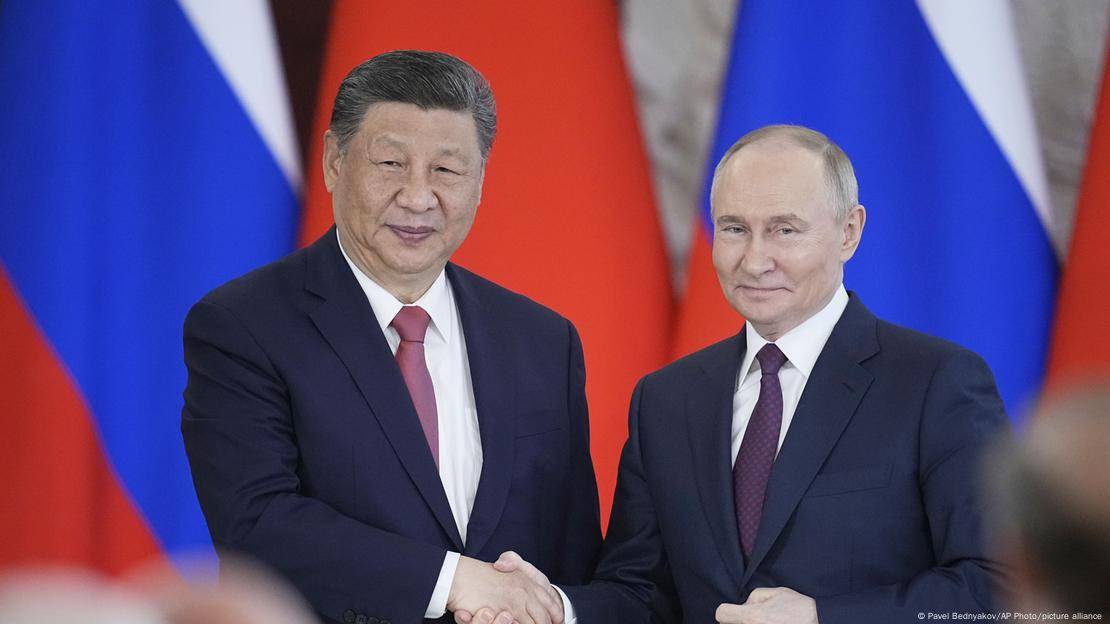809 Views
Under the Shadow of Taiwan: How Moscow and Beijing Are Forging a New Military Axis
In recent years, escalating tensions and conflicts in the Taiwan Strait have become one of the most significant geopolitical issues. In this context, leaked documents reveal that Russia and China have taken new steps to deepen their strategic-military cooperation — including the transfer of armored equipment, advanced technologies, and specialized troop training. These developments could shift the balance of power in East Asia.
According to information analyzed by the Royal United Services Institute (RUSI), Russia has, under a confidential arrangement, committed to transferring a full airborne armored battalion to China. This includes 37 BMD-4M amphibious assault vehicles, 11 Sprut-SDM1 amphibious anti-tank guns, 11 BTR-MDM Rakushka armored personnel carriers, Rubin and KSHM-E command and reconnaissance vehicles, along with Orlan-10 drones.
Beyond the delivery of hardware, the deal involves advanced parachute systems for airdrop operations, the establishment of maintenance and repair centers on Chinese soil , and the full transfer of technical documentation for the localization of production. A key component of the cooperation is the training of Chinese airborne and Special Forces units by Russian instructors, enabling China to gain direct experience with Russian command and operational doctrines. Without such training, complex systems like the BMD-4M and Sprut-SDM1 could not be effectively deployed in combined operations.
According to the leaked documents, one of the primary goals of these exercises is to transfer Russia’s real combat experience — particularly from the Ukraine conflict — to the Chinese military, through joint drills held both in Russia and China . Cooperation with Moscow enables Beijing to enhance its combat readiness and modernize its airborne warfare doctrine, while also developing the capacity to produce similar systems domestically. This, in turn, reduces China’s dependence on foreign suppliers and boosts its self-sufficiency — a key advantage in any potential Taiwan Strait crisis.
The main objective of these technical and training collaborations is to strengthen the Chinese People’s Liberation Army’s (PLA) airborne capabilities for swift and effective operations near Taiwan’s ports and airports. These military interactions are designed to pave the way for subsequent troop deployments and facilitate combined operations in the event of a confrontation. Analysts view these efforts as part of the deepening strategic-military partnership between Moscow and Beijing, which, in a Taiwan conflict, could provide both prior preparedness and operational leverage.
At the same time, this arms cooperation also serves Russia’s financial interests, providing crucial funding for its defense industries strained by the Ukraine war. Moscow has supplied China with the mentioned equipment — including BMD-4Ms, Sprut-SDM1s, and airborne command systems — valued at over $584 million. For Russia, heavily sanctioned and economically pressured by the West, such deals represent a vital financial lifeline. Meanwhile, China has reciprocated by providing raw materials and essential components for Russia’s production of drones and other military systems. In 2023, China reportedly accounted for 90% of Russia’s microelectronics imports and 70% of its machine tool import.
These exchanges, especially in advanced technologies, underscore a growing mutual dependence and strategic interconnection between the two powers.
Overall, the Russia–China military partnership goes far beyond a simple arms transaction. It encompasses the transfer of advanced weaponry, elite force training, the enhancement of China’s airborne capabilities, and the financial reinforcement of Russia’s defense sector. For China, this cooperation means gaining combat experience, improving its airborne doctrine, and developing indigenous production capacity for advanced systems. For Russia, it means sustaining its defense industries and deepening Beijing’s strategic alignment with Moscow.
Ultimately, this military cooperation not only strengthens China’s defensive and offensive capabilities but also reshapes the power balance in East Asia, particularly concerning Taiwan. It carries broad strategic implications for regional security and the evolving international order. The Russo-Chinese partnership, therefore, is not just a tactical alignment — it could become a key factor in both Taiwan-related contingencies and Beijing’s regional power projection against its Asian and Western rivals.
Translated by Ashraf Hemmati from the original Persian article written by Navid Daneshvar
https://www.rusi.org/explore-our-research/publications/commentary/how-russia-helping-china-prepare-seize-taiwan
https://www.ft.com/content/1b55899f-ff05-47ff-b1d0-53c8f5199a11
https://www.ft.com/content/1b55899f-ff05-47ff-b1d0-53c8f5199a11
https://apnews.com/article/russia-china-taiwan-xi-putin-ukraine-invasion-ac47ae6daf03ceb5d49d6e2d0da7fcab
https://www.asiafinancial.com/china-providing-90-of-chips-used-in-russia-despite-sanctions
https://apnews.com/article/united-states-china-russia-ukraine-war-265df843be030b7183c95b6f3afca8ec

Comment
Post a comment for this article